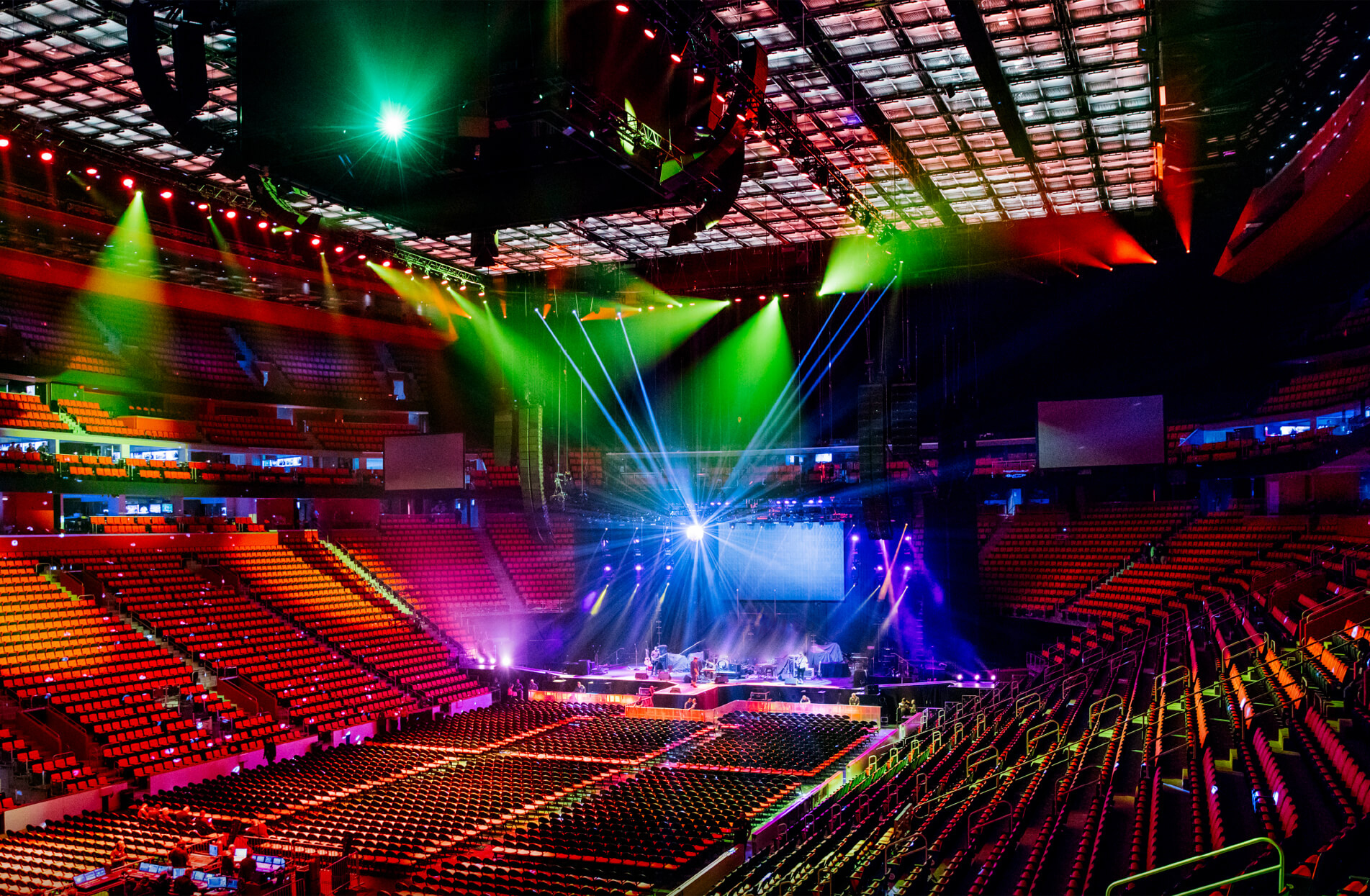Don’t Fall for Complacency When It Comes to Safety

Directly from The National Safety Council’s website, “It may come as a surprise that the third leading cause of unintentional injury-related death is falls. A fall can end in death or disability in a split second, but with a few simple precautions, you’ll be sure to stay safe at at work.” Full disclosure: this topic hits very close to home for me. My husband, Jim, is a traumatic brain injury (TBI) survivor. The TBI resulted from a fall he and a co-worker took during a load-in in 2005. (Both of them survived.) I asked him if he would share some thoughts about the fall for National Safety Month. (Specific information such as names and exact locations have been left out for obvious reasons.)
A long time ago, in a land far, far away… Well, not really. It was 2005 in Canada. The major accident that changed my and my loved one’s lives forever occurred while I was touring with [a major musical]. Because I had been doing the same task all over the country, I had become complacent and made some terrible decisions that nearly cost me my life.
I was working with a local stagehand to hang an 85 lb. moving-light fixture from the balcony rail. He and I were sitting on the railing, which was a 45 degree concrete ledge that sloped away from the balcony seating. We were both bracing ourselves on the balcony rail, which was a standard inch and a half schedule 40 pipe. Because the railing was already holding the majority of our weight, I figured that the rail was plenty strong to be pushed against for the lift. Neither of us were wearing our 5-point safety harnesses when the balcony rail let out from beneath us. We both fell 15 feet 9 inches into the seating below. My co-worker suffered a concussion and broken ribs. My situation was a little different.
In the emergency room, doctors informed my family and coworkers that I needed emergency brain surgery. Because of the severe blow to the back of my skull, brain swelling was going to kill me. They had to remove some of my frontal lobe to relieve the swelling. After surgery, I was put into a medically-induced coma for 2 weeks. I required a tracheotomy as well as a feeding tube. My family told me there were a few times the doctors were afraid that they were about to lose me.
I don’t remember the fall. I don’t remember when I was released from the Canadian ER. I don’t remember the following 3 and a half months. My loved ones were told to expect 1-2 years for my recovery and to plan for me to be much like a stroke victim – loss of memory, coordination, and thinking skills. I recovered much better than speculated, but these 13 years later, I wear visible reminders of that day. And by visible reminders, I mean scars. Aside from various little ones from staples and such, the largest scar runs across my scalp, from ear-to-ear, just behind my hairline. There’s the tracheotomy scar in the center of my throat. And I still have a divet in my abdomen from the feeding tube.
The scars are trivial compared to the pain inflicted on my loved ones. My hospital care lasted for nearly 8 months. My mother was out of work that whole time, without pay, to care for me and assist the small army of doctors and nurses who were treating me. Though I was cognizant, there was a whole lot of healing going on in my brain and memories of the whole ordeal are episodic at best. At worst, the memories are just gone. As I was slowly going through the various steps and tests of my recovery, I do remember that I was angry. Very, very angry. I was cursing like a sailor at the doctors, nurses, my friends and my family. I insisted repeatedly, “I’m fine! leave me alone. Let me go back to work.”
I wasn’t fine. Because of my brain trauma, I was having a really hard time with critical thinking skills, problem solving and communication. For several years after my accident, and still a bit to this day, I struggle with complex problem solving. If a task at work requires a bunch of steps – like researching, purchasing and assembling materials, transporting a finished piece followed by installation – all the steps can become overwhelming. My common response to this feeling of being overwhelmed is to slip into “tunnel vision.” This is when I catch myself being hyper-focused on one aspect of a project to the detriment of the whole. This feeling of being overwhelmed and having trouble communicating has also given me a short fuse. You can see how that can be a problem in the wonderful world of collaborative art.
I learned some painful lessons from that unfortunate fall. First, assume nothing. Had I not assumed that the balcony rail was load rated, I wouldn’t have trusted it. Roman Numeral Two, don’t get too comfortable. Complacency is the mother of all screw-ups. I had hung that light fixture on 80+ rails all over the country. What could possibly go wrong? And finally, Letter C: OSHA rules are not just a bunch of random, pain in the arse protocols. Had I simply followed the rules, I would have saved my loved ones and myself a tremendous amount of suffering.
Remember to assess each situation that requires working at height. Understand the risk involved. Plan accordingly and proceed with the proper equipment and the appropriate help, if needed.
Thanks for sharing, Jim.

